How do you understand what animal species are? The most amazing extinct animals
Animal world quite big. But while assessing all its diversity, we should not forget how many species have become extinct in the course of evolution. However, already in modern times, many animals have disappeared from the face of the planet not for natural reasons, but in the course of the activities of the most dangerous creature - man. When remembering the most amazing animals, you should not limit yourself only to ancient times and dinosaurs.
Many animals became extinct quite recently, leaving us with not only their remains as souvenirs, but also photographs and memories of eyewitnesses. There are sad statistics that say that 99.9% of all species that existed on Earth have become extinct.
In his book Encyclopedia of Species Extinct from Human History, writer Ross Piper counted as many as 65 creatures. The author moves back in time, starting with the golden toad and Eskimo curlew and five species that were last seen less than a hundred years ago. Mention is also made of those animals that became extinct more than 50 thousand years ago - mega-sharks and giant monkeys. Homo erectus and his closest relatives are also considered extinct. We will tell you below about the most amazing extinct animals and birds.
Tyrannosaurus Rex, extinct 65 million years ago. This animal was the largest carnivore of all those who ever lived on the planet. It was 43 feet long and 16 feet high. Scientists estimate that the tyrannosaurus could weigh up to 7 tons. Like its other close relatives, this predator was bipedal, it had a massive skull, and at the back it was balanced by a long and heavy tail. The hind limbs were large and strong, but the forelimbs were much smaller and practically did not perform any important functions. These fossil animals were discovered in North America in rock formations. Scientists have found that they went extinct 68.5-65 million years ago and were the last dinosaurs to go extinct before the Cretaceous period. More than 30 animal specimens were identified, some even retaining almost their entire skeleton. Researchers even found soft tissue remains. Such an abundance of fossil material allowed for a large-scale study of this animal, including the history of its existence and biomechanics.
Quagga, became extinct in 1883. This amazing animal was half horse and half zebra. The quagga is one of Africa's most famous extinct creatures. This subspecies of plains zebra has been found in large numbers in the Cape Province of South Africa and the southern Orange Free State. This animal differed from other zebras in that it had characteristic bright markings on the front of its body. In the middle part of the body, the stripes became darker, wider and merged. The back part was completely uniform brown. The body length of this odd-toed ungulate was 180 centimeters. The name of this species comes from the name of the zebra KhoiKhoi, being an onomatopoeia of this word. Scientists initially classified the quagga as a separate species, Equus Quagga. This happened in 1788. Over the next half century, researchers and naturalists described many other zebras. Due to the wide range of colors of the creatures (two identical zebras simply do not exist), there were a large number of described “species”. At the same time, it turned out to be difficult to determine which of them were real and which were simply natural variants. While all this confusion was being sorted out, the quaggas were exterminated for meat and skins. The last wild quagga was killed in 1878, and 5 years later the last representative of this subspecies died in the Amsterdam Zoo. Due to much confusion between the different subspecies of zebra, especially among the public, the quagga became extinct before it was clear that it was a distinct species. But the animal became the first among the extinct ones, whose DNA began to be studied. In 1987, a project to restore this biological species was born. The first 9 individuals were bred through selective breeding and placed in a special camp in Namibia. In 2005, a representative of the third generation of quaggas was born, some believe that he is very similar to a typical representative. For now, the project is just developing, but there is hope to resurrect this extinct animal.
Tasmanian tiger, extinct in 1936. This animal was the largest marsupial carnivore known to science. It lived in Australia and New Guinea and became extinct in the last century. Due to its striped back, it was nicknamed the Tasmanian tiger, although there are other nicknames - Tasmanian tiger, tiger, marsupial wolf. It was the last surviving member of its genus of marsupial wolves. But in the stone chronicles similar species were discovered that existed in the early Miocene. The marsupial ox reached 1-1.3 meters in length, 0.6 meters in height, and weighed 20-25 kilograms. Outwardly, the animal looked like a dog. It is noteworthy that its elongated mouth could open as much as 120 degrees. In Australia, the marsupial wolf became extinct thousands of years before Europeans arrived here, but survived in Tasmania along with other endemic species, such as the Tasmanian devil. When people discovered Tasmania in 1642, traces of a wild animal with claws like a tiger were discovered. But the first detailed scientific description of it was made in 1808. In the 1830s, mass extermination of the Tasmanian tiger began - it was considered a sheep hunter. There were real legends about the predation and ferocity of the marsupial wolf. At the beginning of the 20th century, the island also experienced an epidemic of canine distemper, which practically destroyed these already rare animals. But this did not stop the man; the law still did not protect rare view. As a result, the last wild wolf was killed in 1930, and in 1936, the last representative of the Tasmanian tigers died of old age at the zoo. Today there is a $1.1 million reward for anyone who can catch the marsupial wolf alive. Now Australian scientists are trying to clone this unique animal.
Steller's cow became extinct in 1768. This marine mammal from the squad of sirens was discovered in 1741. It was discovered by Georg Steller, a scientist who was part of the Bering expedition. The length of the sea cow reached 10 meters, and it weighed up to 4 tons. In size, the animal was significantly larger than a seal or manatee. The cow was sedentary, living in shallow bays and feeding on algae. The animal had a vague shape, its tail was forked, like a whale, and there were two thick forelimbs. Steller described that the species found had a thick and black skin, like the bark of an old oak tree, and the head was small in relation to the body. The cow had no teeth at all, but only two flat bone plates located one above the other. Researchers discovered a large number of these animals on Bering Island, and they were not afraid of people at all. This is what ruined them. After all, the smell and taste of their fat was quite pleasant, the meat was also tasty and could be stored for a long time. Even the milk was edible, resembling sheep's milk. Predatory fishing completely exterminated this species by 1768. Fossils later reported that Steller's sea cow previously lived along the coast of the northern part Pacific Ocean, reaching as far south as Japan and California. Given how quickly the animals were exterminated in this area, it was most likely the arrival of people that caused their extinction in other places. Over the past couple of centuries, there have been isolated reports of sea cow sightings in areas from the Bering region to Greenland. Scientists cherish the hope that a small population of animals has survived to this day. In the meantime, there is an option to clone the animal in the future, because there remains a piece of its skin preserved in alcohol, carrying genetic material.
The Irish deer became extinct about 7,700 years ago. This deer was the largest that ever lived. It is also called the Irish elk, and lived throughout Eurasia, from Ireland and in the east to Lake Baikal itself. The habitat of the deer is the late Pleistocene and early Holocene. Based on carbon dating, it was found that the last animal died about 7,700 years ago. Such a deer looked like a doe, but was distinguished by its enormous size. It was about two meters high, and the giant horns had a span of up to 4 meters. They weighed about 35 kilograms, at the top they expanded like a shovel and had sharp ends. The structure of the teeth and limbs indicates that this animal lived in meadows - there was simply nothing to do with such a decoration on its head in the forest. It is the animal’s horns that are of interest, not its gigantic size. Scientists believe that the reasons for the extinction are most likely natural - the forest began to encroach on open spaces, taking away habitats. In those days, many other large animals disappeared from the face of the planet. One should not discount humans; their hunting could also undermine the population of the horned beauty. However, the theory about the influence of hunting is rather dubious. After all, the species was widespread throughout the continent. Most likely, it co-evolved with humans throughout its existence, even adapting to their presence.
Caspian tiger, disappeared in 1970. It is the third largest tiger of its species. The Caspian tiger is also called Turanian or Persian. This subspecies lived in Iran, Iraq, Afghanistan, Turkey, Kazakhstan, the Caucasus, Central Asia and Mongolia. This subspecies had a bright red coat color, and the stripes were longer than usual, with a brownish tint. The body was rather stocky, the elongated legs were strong, and the paws were wide. The Caspian tiger also had unusually large claws. The largest individual weighed 240 kilograms; this subspecies is second in size only to the Bengal and Amur. But the females weighed 85-135 kilograms. The tiger's ears were short and small, with no hair at the tips. In Asia, people have traditionally tolerated the existence of these neighbors. Russian settlers caused great harm to the population. Tigers began to be purposefully destroyed. But this influence was only indirect. Tigers became extinct due to the fact that the cultivation of floodplain lands in riverbeds deprived the animals of their food supply. After all, previously wild boars and roe deer lived freely in tugai forests.
Wild aurochs, disappeared since 1627. This animal is one of the most famous animals that became extinct in Europe under human control. These are very large primitive bulls, the ancestors of modern cows. Bison evolved in India about two million years ago and then migrated to the Middle East and Asia. The animal came to Europe about 250 thousand years ago. But by the 13th century, the tur's habitat was limited to Poland, Lithuania, Moldova, Transylvania and East Prussia. The powerful beast had a height at the withers of up to 180 centimeters, and it weighed up to 800 kilograms. The head was set high, and it was crowned with sharp horns. The males were black with a narrow light stripe along the back. And the females and juveniles were reddish in color. The main habitat of the aurochs is steppes and forest-steppes, but the species lived out its last days in the forests. Only the nobility had the right to hunt them, and subsequently only the royal family. The number of turs began to fall sharply, and the hunt was stopped. The royal court required the rangers to provide animals with fields for grazing, for which a reduction in taxes was due. There were even decrees that punished the killing of this large animal with death. In 1564, gamekeepers knew of only 38 individuals, as reported in the royal report. The last sighting of a living bison was in 1627, when a Polish woman saw it in the forest. His skull subsequently ended up in the Swedish army and is currently the property of one of the museums in Stockholm. In 1920, two German zoologists tried to revive this species from livestock. After all, cows and bulls are descendants of aurochs. The plan was based on the assumption that a species could not go extinct while all the genes were still present in at least some of the descendants. You just need to put all the genes together. As a result, after painstaking work, a “restored tour” was obtained, which in appearance is almost no different from its ancestor. However, this is just a form of livestock.
Great auk, extinct in 1844. This bird was the only one in the genus Pinguinus to survive to this day, but it became extinct quite recently. The bird's height was about 70 centimeters, and its weight was about 5 kilograms. The wings were rather poorly developed, this auk could barely walk on land, could not fly, but swam perfectly. They had white and black shiny feathers, the black key was heavy and had grooves. Flightless, wingless birds have long been a favorite object of hunting for coastal residents of Canada, Iceland, Greenland, Norway and even Great Britain. It was not difficult to kill this defenseless bird on land. In the 16th century, residents of Iceland hunted for auk eggs in boatloads, and in 1844, the last two representatives of the species were killed. This is the first American and European bird to be completely exterminated by humans. The remains of birds found in Florida suggest that the birds also traveled far to the south. It is curious that Neanderthals began hunting great auks more than 100 thousand years ago. This is evidenced by the processed bones found on their fire pits. Today, about 75 bird eggs, 24 complete skeletons and 81 stuffed animals remain in the collections.
The cave lion became extinct about 2000 years ago. This lion was the largest that ever existed. It was also called European or Eurasian. Lions first appeared on the continent 700 thousand years ago. The cave subspecies appeared about 300 thousand years ago. It lived in northern Eurasia, penetrating deep to the north. The adult, found in 1985 in Germany, was about 1.2 meters in height and 2.1 meters in length, excluding the tail. This is roughly equivalent to a large modern lion, but other individuals of this subspecies were even larger. It is believed that the cave lion was 5-15% larger than modern ones. The appearance of the animals made it possible to clarify their rock paintings from the Stone Age. Unlike their relatives from Africa or India, they were almost always depicted without hair. The coloring was one color, and there was a traditional tassel on the tail. Lions lived in Europe both during warm periods and in the floors of glaciers. They hunted the large ungulates of that time. Despite their name, these felines rarely appeared in caves, simply using them as shelters. This concerned mainly sick and old individuals. The cave lion most likely went extinct 10,000 years ago during the last Wurm Glacier, but there is some evidence that this animal could have existed in the Balkans as early as 2,000 years ago.
Dodos disappeared at the end of the 17th century. This family of flightless birds lived on the Mascarene Islands in Indian Ocean. They were relatives of pigeons, but stood about a meter tall. An adult bird weighed up to 25 kilograms. The legs were like those of a turkey, and the beak was massive. This family includes 3 species - the Mauritian dodo, or dodo, the Bourbon dodo and the hermit dodo. Birds lived in forests and kept in pairs. They ate fruits, laying one white egg directly on the ground. Once upon a time, dodos could swim, run and fly. But during evolution, the wings lost their function, because there were simply no natural enemies on the islands. But then a man appeared. First the Portuguese, and then the Dutch, methodically destroyed the bird. The ship's supplies were replenished with its meat. Over time, rats, dogs and cats were brought to the islands, which ate the eggs of the helpless bird. And the hunt for her was simple - they simply approached her and hit her on the head. That is why the Portuguese nicknamed the dodo “dodo”, which in common parlance means “stupid”. Dodos and dodos in particular are widely used as an archetype for extinct species because their extinction is directly related to human activity. Even the phrase “dead as a dodo” appeared. It means both final and certain death. The phrase “to go the way of the dodo” means that something will soon become extinct or become obsolete, fall out of the mainstream, or become a thing of the past. Today, only skeletons and a symbol on the coat of arms of Mauritius remain of the unique bird.
Animals are the most diverse group of organisms on Earth. Currently, there are about 2 million species of animals on the planet. Most of them are insects (butterflies, mosquitoes, beetles, flies...). About 130 thousand species of mollusks are known: snails, slugs, pearl barley, squid. The diversity of fish is much more modest - only 25 thousand species, and of birds - 8,600 species. And there are only about 4 thousand species of mammals.
Note that we are not talking about the total number of animals in general, but about the number of animal species. The absolute number of animals on our planet is expressed by an astronomical number!
Animals vary in size. For example, the giant blue whale the body weight reaches 150 tons (the mass of the tongue of such a whale is equal to the mass of a small elephant), and the slipper ciliate can only be detected using a microscope.
Animals in any habitat do not live everywhere, but occupy the most favorable areas for them. They are called habitats (or habitats) of animals. For example, nightingales are found in damp and shaded areas of the forest. Pike in rivers prefer places with slow currents (pools, pools), overgrown near the banks.
Organisms in nature do not live in isolation from each other, but in species.
A species is a collection of similar individuals capable of interbreeding to form fertile offspring. A species consists of many individuals that reproduce, disperse, and maintain unity in the struggle for existence. The distribution area of a species is called its range.
Zoology is the science of animals. People have been using animals in their lives for a long time. Hunting animals, protecting homes from predators and poisonous snakes etc., they acquired knowledge about their appearance, habitat, lifestyle, habits and passed it on from generation to generation. Over time, books about animals appeared, and the science of zoology arose (from the Greek “zo-on” - animal and “logos” - word, doctrine). Her birth dates back to the 3rd century. BC. and is associated with the name of the ancient Greek scientist Aristotle.
Modern zoology is a whole system of animal sciences. Some of them study the structure, development of animals, lifestyle, distribution on Earth; others are specific groups of animals, for example only fish (ichthyology) or only insects (entomology). The knowledge gained by zoological sciences is of great importance for the protection and restoration of the numbers of a number of animals, the fight against plant pests, carriers and pathogens of human and animal diseases, etc.
Classification of animals. All animals, like other living organisms, are united by scientists into systematic groups based on signs of kinship. The smallest of them is the species. All white hares living in the taiga, mixed forests or tundra belong to one species - the white hare. In zoology, a species is a collection of animals that are similar to each other in all essential features of structure and vital activity, live in a certain territory and are capable of producing fertile offspring. Each animal that has unique structural and behavioral features is called an individual. Similar species are grouped into genera, genera into families, and families into orders. Larger systematic groups of animals - classes, types.
The animal kingdom includes two subkingdoms: Unicellular animals and Multicellular animals, which unite more than 20 types and several hundred classes.
The species diversity of a biocenosis is the totality of plant and animal species that form a given biocenosis; represented by all groups of organisms - producers, consumers and decomposers; disruption of any link in the food chain causes disruption of the biocenosis as a whole (for example, deforestation leads to a change in the species composition of insects, birds, and, consequently, animals).
Species diversity is the number of species in a given community or area. There are alpha diversity (the number of species in the biotope in question), beta diversity (the number of species in all biotopes in a given area) and gamma diversity.
Any ecosystem is composed of a certain number of species of plants and animals, between which a kind of balance has been established. Each population of individual species is characterized by a certain relationship between the formation of new individuals and the death of old ones. The system as a whole is characterized by the periodic appearance of some species (as a result of divergence or introduction) and the eradication of others.
The equilibrium number of species decreases when the number of new species decreases and when they become extinct. Let's take an example of an island ecosystem. The formation of species in the island system is replaced by the appearance of species from the nearby mainland; if there are few species on the island, then the rate of colonization of the island by new species will decrease, and the emergence of new species will slow down sharply. If all the species characteristic of the mainland are present on the island, there will be no possibility of species appearing from the mainland at all. As species on the island increase, the rate of extinction increases, due to the large number of populations present and the fact that increased competition accelerates the exclusion of any species.
Small populations tend to die out faster than large populations. On large islands the number of species is higher than on small islands and the extinction curve of species on small islands is higher than on large islands. Mainland populations of most species tend to be larger than island populations, and therefore the rate of species extinction on the island is higher than on the mainland. On the mainland, new species appear more often, formed within a certain region and due to the divergence of species in this region, and less due to the arrival of new species from other territories.
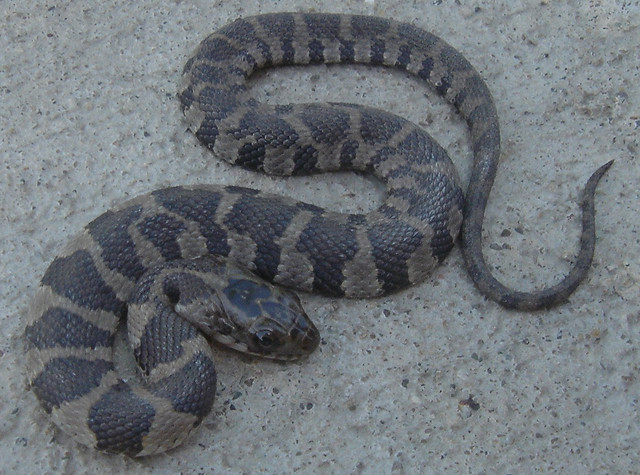
The number of species in a region influences the rate of speciation. If the number of species is high, then stabilization is noted in this process due to a decrease in the ecological capabilities of the system for the formation of new species. The role of species loss is similar in systems sea islands and continental systems. The equilibrium number of species indicates the same number of outgoing and emerging species. The intensity of species renewal in most cases exceeds the change in their diversity. The longer the period of ecosystem development, the higher the proportion of endemics in it. In addition, limited lake space and limited diversity of conditions constrain divergence processes. That is, in lake systems the number of species relatively quickly approaches a stable level. Taxa that achieve great diversity are quickly replaced by taxa that evolve slowly but have greater ecological potential and, naturally, are more competitive.
Extinction is a natural process: typical species become extinct within 10 million years of their appearance on Earth. But today, as the planet faces a number of serious problems such as overpopulation, pollution, climate change, etc., species loss is occurring thousands of times faster than would otherwise occur naturally.
It is difficult to know exactly when certain species will disappear from the wild, but it is safe to say that thousands of animal species become extinct every year.
In this article, we take a look at the recently extinct animals that we will miss the most. From the Javan tiger and Caribbean monk seal to the Mauritian dodo (or dodo), here are 25 extinct ones we won't see again.
25. Madagascar pygmy hippopotamus
Once widespread on the island of Madagascar, the Madagascar pygmy hippopotamus was a close relative of the modern hippopotamus, although much smaller.
Initial estimates suggested that the species went extinct about a thousand years ago, but new evidence has shown that these hippos may have lived in wildlife up until the 1970s.
24. Chinese river dolphin

Known by many other names such as "baiji", "Yangtze River dolphin", "white-finned dolphin" or "Yangtze dolphin", the Chinese river dolphin was a freshwater dolphin native to the Yangtze River in China.
The population of Chinese river dolphins declined sharply by the 1970s as China began to intensively exploit the river for fishing, transport and hydroelectric power. The last known surviving Chinese river dolphin, Qiqi, died in 2002.
23. Long-eared kangaroo
Discovered in 1841, the long-eared kangaroo is an extinct species of the kangaroo family native to southeastern Australia.
It was a small animal, slightly larger and slimmer than its living relative, the red hare kangaroo. The last known specimen of this species was a female captured in August 1889 in New South Wales.
22. Javan tiger
Once common on the Indonesian island of Java, the Javan tiger was a very small subspecies of tiger. During the 20th century, the island's population increased manifold, leading to massive clearing of forests, which were converted into arable land and rice fields.
Habitat pollution and poaching have also contributed to the extinction of this species. The Javan tiger has been considered extinct since 1993.
21. Steller's cow
The Steller's cow (or sea cow or cabbage cow) is an extinct herbivorous marine mammal that was once abundant in the North Pacific Ocean.
It was the largest member of the sirenian order, which includes its closest living relatives, the dugong and the manatee. Hunting of Steller's cows for their meat, skin and fat led to their complete extermination within just 27 years of the species' discovery.
20. Taiwanese clouded leopard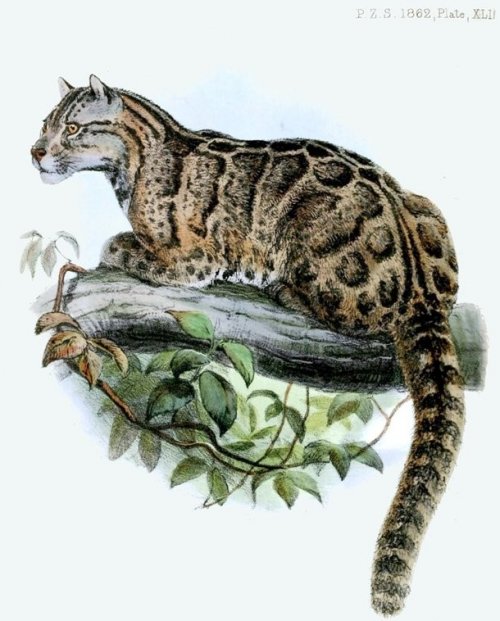
The Taiwanese clouded leopard was once endemic to Taiwan and a subspecies of clouded leopards, rare Asian cats that were considered an evolutionary link between big and small cats.
Over-logging has destroyed the animals' natural habitat, and the species was declared extinct in 2004 after 13,000 camera traps showed no evidence of Taiwanese clouded leopards.
19. Red gazelle
The rufous gazelle is an extinct species of gazelle that is believed to have lived in the sediment-rich mountainous regions of North Africa.
This species is known to only three individuals, purchased at markets in Algeria and Oman, north of Algeria, at the end of the 19th century. These copies are kept in museums in Paris and London.
18. Chinese paddlefish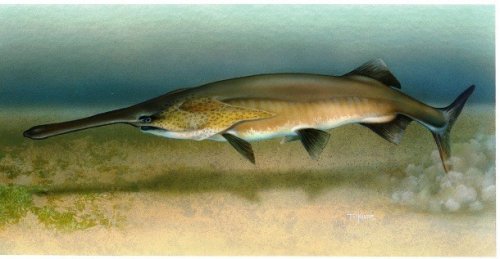
Sometimes also called psefur, the Chinese paddlefish was one of the largest freshwater fish. Uncontrolled overfishing and destruction of natural habitat put the species at risk of extinction in the 1980s.
The last confirmed sighting of this fish was in January 2003 in the Yangtze River, China, and the species has since been considered extinct.
17. Labrador eider
The Labrador eider is believed by some scientists to be the first endemic bird species North America, which disappeared after the Columbus Exchange.
It was already a rare bird before the arrival of European settlers, and became extinct soon after. The females were gray in color, while the males were black and white. The Labrador eider had an elongated head with small, beady eyes and a strong beak.
16. Iberian ibex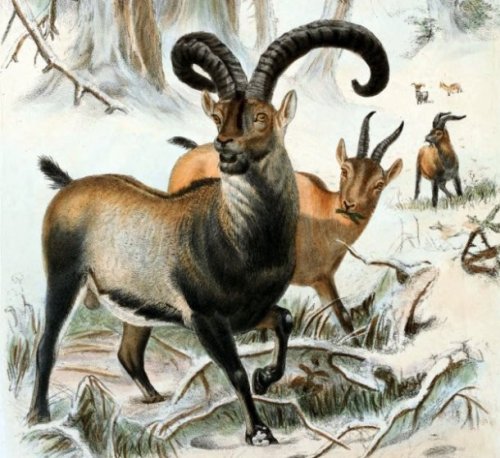
Once endemic to the Iberian Peninsula, the Iberian ibex was one of four subspecies of the Spanish ibex.
During the Middle Ages, the wild goat was abundant in the Pyrenees, but the population declined rapidly in the 19th and 20th centuries due to uncontrolled hunting. In the second half of the 20th century, only a small population survived in this region, and in 2000 the last representative of this species was found dead.
15. Mauritian dodo, or dodo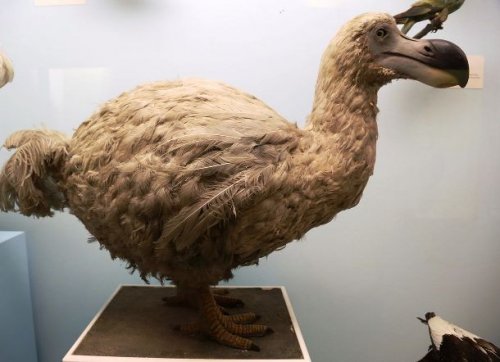
is an extinct flightless bird that was endemic to the island of Mauritius in the Indian Ocean. According to subfossil remains, Mauritian dodos were about a meter tall and may have weighed up to 21 kg.
The appearance of the Mauritian dodo can only be judged from drawings, images and written sources, therefore the lifetime appearance of this bird is not known for certain. The dodo is used in popular culture as a symbol of extinction and the gradual disappearance of a species.
14. Orange Toad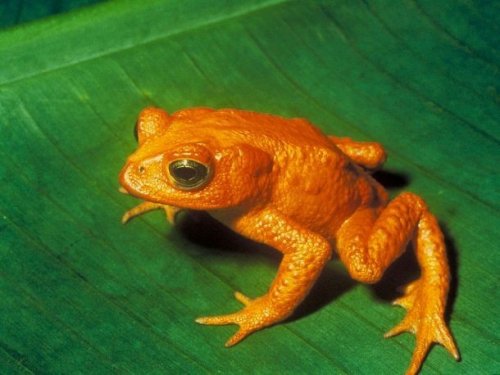
Orange toads were small, up to 5 cm long, toads that used to be found in a small highland region north of the city Monteverde, Costa Rica.
The last living specimen of this animal was discovered in May 1989. Since then, no signs have been recorded confirming their existence in nature. The sudden disappearance of this beautiful frog may have been caused by a chytridiomycete fungus and extensive habitat loss.
13. Choiseul pigeon
Sometimes also referred to as the crested thick-billed pigeon, the Choiseul pigeon is an extinct species of pigeon that was endemic to Choiseul Island in the Solomon Islands, although there are unconfirmed reports that members of the species may have lived on some nearby islands.
The last documented sighting of the Choiseul pigeon was in 1904. It is believed that these birds became extinct due to predation by cats and dogs.
12. Cameroonian black rhinoceros
As a subspecies of the black rhinoceros - a critically endangered species of rhinoceros - the Cameroonian black rhinoceros was once widespread in many African countries, including Angola, Kenya, South Africa, Ethiopia, Chad, Rwanda, Botswana, Zambia and others, but was hunted irresponsibly and poaching had reduced the population of this amazing animal to just the last few individuals by 2000. In 2011, this subspecies of rhinoceros was declared extinct.
11. Japanese wolf
Also known as the Ezo wolf, the Japanese wolf is an extinct subspecies of the common wolf that once inhabited the coast of Northeast Asia. Its closest relatives were North American wolves rather than Asian ones.
The Japanese wolf was exterminated Japanese island Hokkaido during the Meiji Restoration, when reforms were carried out in agriculture American style was accompanied by the use of strychnine baits to kill predators that posed a threat to livestock.
10. Caribbean monk seal
Nicknamed the “wolf of the sea,” the Caribbean monk seal was a large species of seal that inhabited the Caribbean. Excessive hunting of seals for oil and depletion of their food sources are the main reasons for the extinction of the species.
The last confirmed sighting of a Caribbean monk seal dates back to 1952. These animals were not seen again until 2008, when the species was officially declared extinct after a five-year search for survivors that came to nothing.
9. Eastern Puma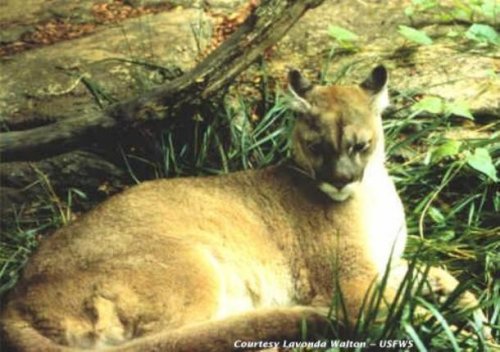
The eastern cougar is an extinct species of cougar that once lived in northeastern North America. The eastern puma was one of the subspecies of the North American cougar, a large cat that inhabited most USA and Canada.
Eastern cougars were declared extinct by the US Fish and Wildlife Service in 2011.
8. Great Auk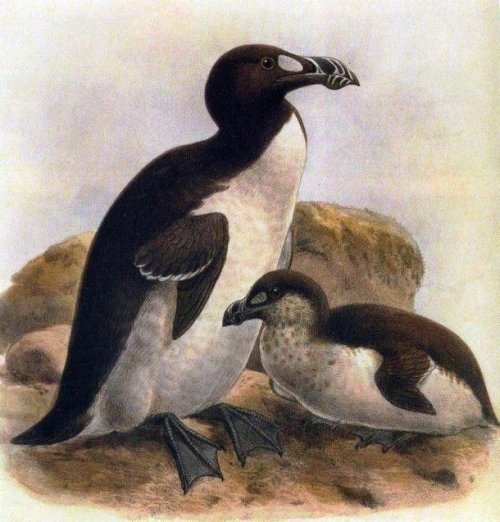
The great auk was a large flightless bird of the auk family that became extinct in the mid-19th century. Once widespread throughout North Atlantic, from Spain, Iceland, Norway and the UK to Canada and Greenland, this beautiful bird was exterminated by man for its fluff, which was used to make pillows.
7. Tarpan
Also known as the Eurasian wild horse, the tarpan is an extinct subspecies of wild horse that once lived across much of Europe and parts of Asia.
Since tarpans were herbivores, their habitat was continuously decreasing due to the growing civilization of the Eurasian continent. Combined with the incredible extermination of these animals for their meat, this led to their complete extinction at the beginning of the 20th century.
6. Cape Lion
An extinct subspecies of lion, the Cape lion lived along the Cape Peninsula on the southern tip of the African continent.
This majestic big cat disappeared very quickly after Europeans arrived on the continent. Dutch and English colonists and hunters simply exterminated this species of animal at the end of the 19th century.
5. Falkland fox
Also known as the warra or Falkland wolf, the Falkland fox was the only native land mammal to the Falkland Islands.
This endemic canid became extinct in 1876, becoming the first well-known representative canids that became extinct in historical times. This animal is believed to have lived in burrows and its diet consisted of birds, larvae and insects.
4. Reunion giant turtle
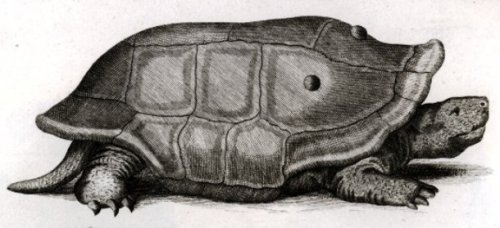
Endemic to Reunion Island in the Indian Ocean, the Reunion giant tortoise was a large turtle, up to 1.1 meters long.
These animals were very slow, curious and not afraid of people, which made them easy prey for the first inhabitants of the island, who exterminated turtles in huge numbers - as food for people, as well as pigs. The Reunion giant tortoise became extinct in the 1840s.
3. Kioea
The kioea was a large, up to 33 cm long, Hawaiian bird that became extinct around 1859.
Kioea was a rare bird even before its discovery Hawaiian Islands Europeans. Even the native Hawaiians did not seem to know about the existence of this bird.
Only 4 specimens of this beautifully colored bird have survived in different museums. The reason for their extinction still remains unknown.
2. Megaladapis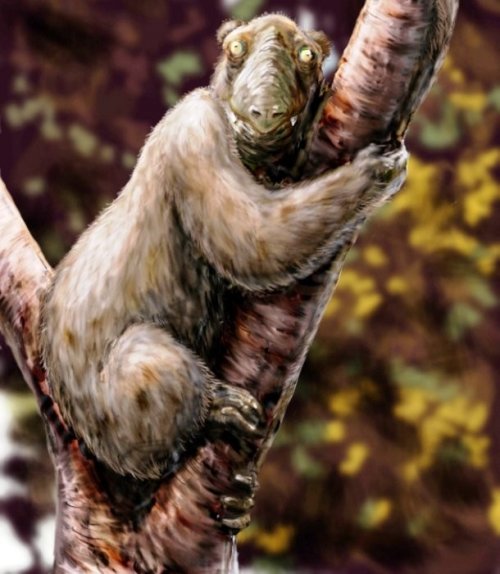
Informally known as koala lemurs, megaladapis are an extinct genus of giant lemurs that once lived on the island of Madagascar.
To clear the area, the island's early settlers burned the local dense forests that were the natural habitat of these lemurs, which, coupled with overhunting, contributed greatly to the extinction of these slow-moving animals.
1. Quagga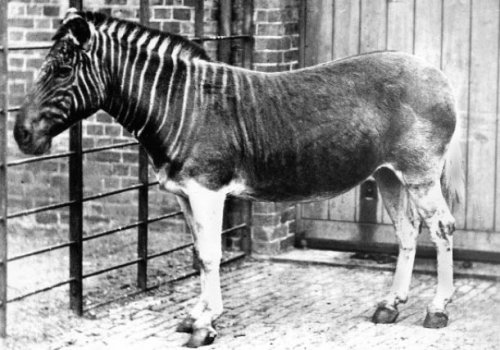
The quagga is an extinct subspecies of savannah zebra that lived in South Africa until the 19th century.
Because these animals were fairly easy to track and kill, they were hunted en masse by Dutch colonists (and later Boers) for their meat and hides.
Only one single quagga was photographed during its lifetime (see photo), and only 23 skins of these animals have survived to this day.
